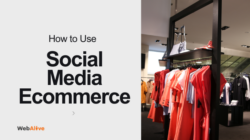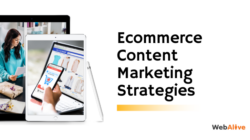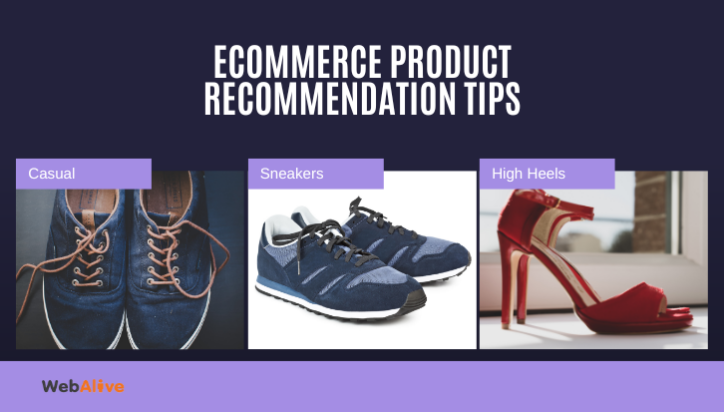
10 Ecommerce Product Recommendation Tips to Increase Conversions
Looking for effective ways to boost your ecommerce sales and win more customers? Try product recommendations.
Today, the recommendation engine market is expected to reach USD 15.13 billion by 2026. However, even if 71% of ecommerce sites offer product recommendations, there are many online retailers that do not.
If your business is also not using any product recommendation tools, remember you are definitely leaving lots of cash on the table. Because, customers today expect more personalised services, and this boost the demand for tailored recommendations even higher.
What is a product recommendation?
Product recommendation is eventually a filtering mechanism that displays the products a user might like to purchase when doing online shopping. Though it usually includes the homepage, category and product detail pages and shopping cart, it typically extends to email marketing.
In brick and mortar stores we have seen using this strategy for years, relying on in-person interactions. In today’s age, this practice has been elevated to new heights. Nowadays online retailers use sophisticated algorithms and data-driven insights to deliver product recommendations. And this feels just as intuitive as an in-store interaction.
Why is it important?
Product recommendations are a form of targeted market. It is vital for enhancing the shopping experience as it offers personalised suggestions tailored to a customer’s preferences or behaviour. This not only makes customers feel understood but also helps them discover products that they might not have found otherwise. And it comes with no doubt that if customers are presented with relevant recommendations, they will purchase more additional products.
10 Tips for Ecommerce Product Recommendations
Here are some effective product recommendation strategies that can help you significantly enhance customer engagement.
1. Suggest products based on browsing history
Offer personalised product recommendations by tracking customers’ past browsing behaviour. Usually, when a customer visits a site, there are particular products, categories or product pages that they particularly spend their time on. These particular data represent their interest and preferences. So, by analysing all these, you can offer them relevant suggestions to make the shopping experience more customised.
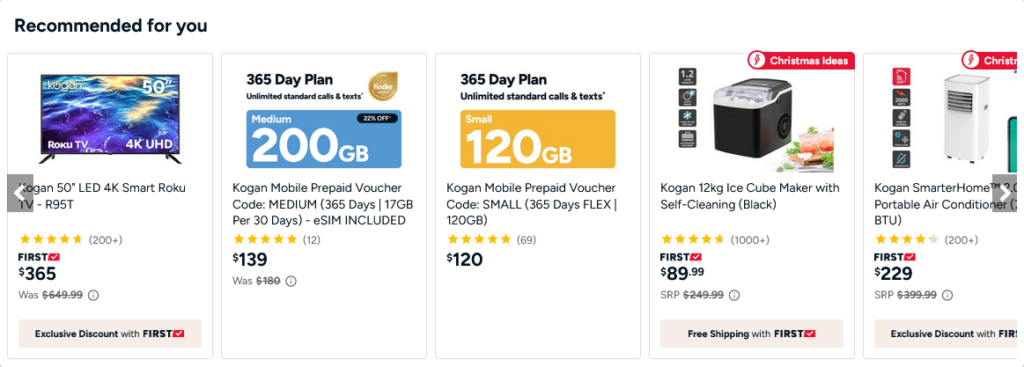
Image source: https://www.kogan.com/au/
Also, there are times when customers leave a site without purchasing anything. You can utilise the browsing history to reengage them with targeted recommendations depending on what they previously looked at. It will also help them discover new items they might not have found. For example, imagine a customer spent time browsing various running sneakers on your site but didn’t buy them.
Next time they visit your site, you can select a curated selection of running shoes as well as suggest related accessories such as socks or fitness trackers.
2. Integrate product recommendations into your email campaigns
It is a powerful strategy to boost customer engagement and drive conversions. Emails targeting cart abandoners are highly effective. Suppose a customer browsed certain categories in their cart without completing the purchase. You can try sending follow-up emails showcasing the items alongside similar or complementary products.
Or if a customer recently purchased a product, recommend similar products or new arrivals in that category in your email. To add a sense of urgency, mention limited stock or time-limited discounts as well. You can try on sending trigger-based email based on specific customer actions. Like, if your customer has viewed a particular category, send them a targeted email with recommendation to entice them back to the site.
3. Introduce “Featured recommendations” or “Newly launched” suggestions
As customers are usually drawn to the highlighted section, doing so will help your newly launched or popular items stand out among the broader product types. This will help you gather customer attention for the items you want to promote. Customers also tend to seek new and exciting product suggestions whenever they land on a site.
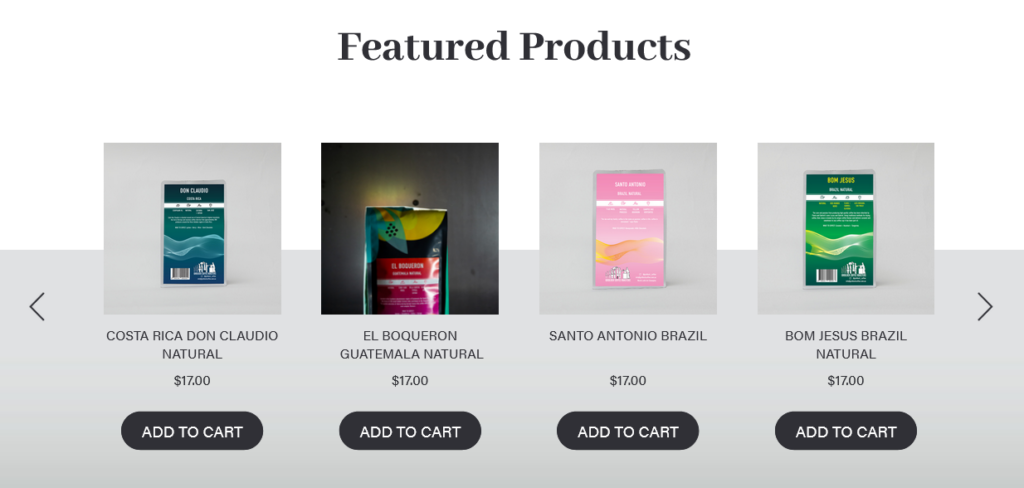
Image source: https://www.gridlockcoffee.com.au/
This will satisfy their curiosity and encourage them to explore more products. When you feature Newly Launched, you simplify the shopping experience for customers. They aren’t required to navigate endless product listings. Instead, they are provided with a refined and tailored selection.
4. Add social proof
Adding social proof is another powerful strategy to build trust and inspire confidence in your customers. It is connected to a psychological phenomenon. If you incorporate elements like customer review, or add section such as Customers who brought this also liked recommendation, it will make your product more credible and appealing.
Because products with positive reviews and high ratings acts as a form of word-of-mouth marketing. And this create a strong influence that maximise the likelihood of a customer choosing the item. You can go for influencer endorsement. When an influencer or authority figure promotes your product, people who look up to that influencer as a trendsetter are more likely to trust the recommendation.
5. Show your best-selling products
Display your best-selling products in a prominent location on your ecommerce site. When your prospects see the products that are frequently purchased, it will make them more inclined to make a purchase. Also, featuring best-sellers will let you keep your audience aware of trending products. For new customers or those who are not familiar with your brand, they can use this best-selling product as a guide to explore your brand with a good starting point.
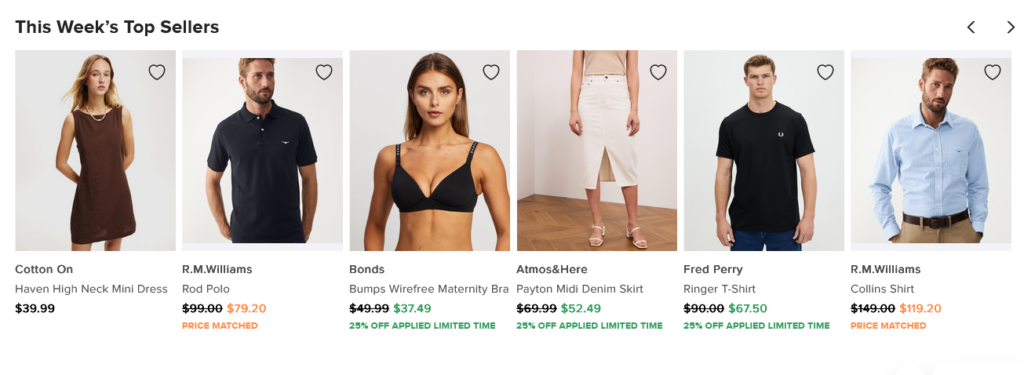
Image source: https://www.theiconic.com.au/
To begin, you can use your homepage to grab attention the right way. Or you can feature your best-selling items on individual product pages to display related best-sellers to cross-sell complementary products. Wherever you place it, make sure to keep your best-selling lists up-to-date with real-time data to make sure they reflect the latest shopping trends and preferences.
6. Provide customised product recommendations
Provide customised product recommendations using data such as purchase history, demographics and preferences and enhance customer satisfaction. Use a customer’s past purchase behaviour to provide customised recommendations. For example, if a shopper frequently buys skincare products, you can suggest related items that complement their previous purchase. Use demographic information such as age, gender, location, and income level.
For example, adult customers will be more interested in tech-savvy products while teenager girls will be more into cute stationaries. You can also segment your customers based on shared traits such as new customers, loyal shoppers or high spenders. Real-time data like cart activity or the time a customer is spending on specific product pages can also be used to offer immediate recommendations.
7. Suggest based on discounts and promotions
If you want to grab the attention of cost-conscious customers and drive more sales, you can use this strategy. Highlight the products that are on sale or part of a promotion or come with a limited-time discount. Display the discounted price alongside the original one to show the value of the promotion by adding visual cues like Limited Time Offer or Flash Sale to create urgency.
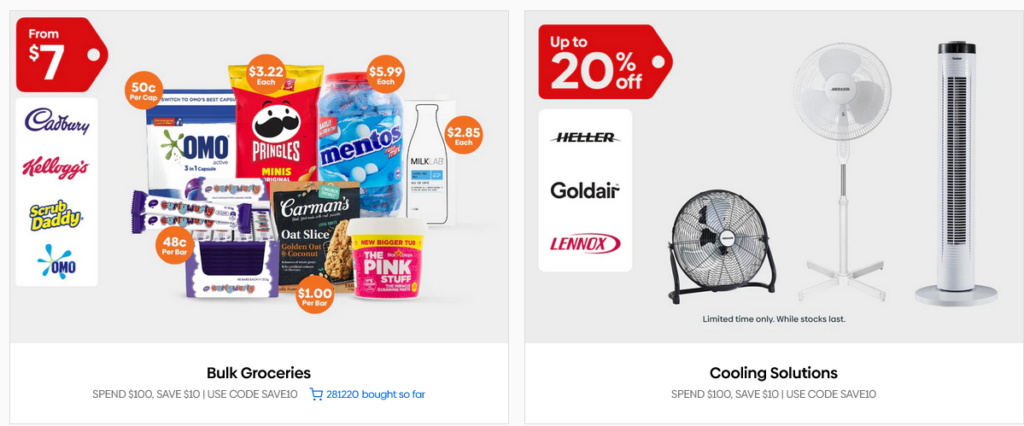
Image source: https://www.catch.com.au/
You can create specific sections like top discounts or limited-time offers to help customers easily navigate and find items on sale. Another effective way is to suggest related discounted products when a customer is purchasing a full-priced item. For example, if your customer is buying a smartphone, recommend discounted phone cases or phone charms as an add-on deal.
Depending on the purchase history, you can offer exclusive deals to boost customer retention and create a sense of exclusivity.
8. Offer seasonal recommendation
You can suggest products based on the time of the year, upcoming holidays or special events to align your offerings with customers’ immediate needs and interests. First, the seasonal trends are analysed based on factors like weather, holidays, and cultural events. Then, recommend products that are particularly relevant to that season.

Image source: https://www.ebay.com.au/
Big holidays, including Christmas, Thanksgiving, Easter or Valentine’s Day, bring a prime opportunity to offer holiday-specific suggestions. You can offer to recommend discounted electronics for black Friday or offer discounts on home decoration items during Christmas. As the season winds down, you can use product recommendations to promote clearance sales on seasonal items.
Another way you can encourage your customers to purchase is by bundling seasonal products together. For example, if you run a fashion retailer, you can bundle scarves, gloves and coats into a winter essential package.
9. Provide recommendations at checkout
You can provide product suggestions at checkout to boost average order value (AOV) by suggesting products and accessories. At the checkout stage, when your customer has already added items, you can display a selection of products that complement the items already in the cart, such as a pair of shoes with a dress or a special lens for a camera or an external hard drive with a laptop.
It is effective because, at this stage, customers are already in a purchasing mindset, so they will be more likely to spend a little more to enhance their purchase. Also, as the recommendations are connected to the products on the cart, they will find it logical, not pushy. You can provide limited-time offers at checkout, like 15% off if you purchase now, to make customers act quickly in making last-minute additions to their cart.
10. Offer products in bundles
Offering personalised bundles is another powerful strategy. Offer a convenient and cohesive set of products that complement each other. Pick a primary product, then offer a bundle of items that complement the product. When your customers purchase in bundles, the need to search for related products individually will be eliminated.
Eventually, it will save them time and give them a hassle-free shopping experience. For example, if a customer is buying a school bag, you can suggest a bundle that includes a matching water bottle, a pencil box and necessary stationaries. As these items naturally go together, customers will appreciate it and add the bundles to their cart since they get everything in one go.
Wrapping up
Using the right strategy when incorporating product recommendations into your website can make all the difference in converting visitors into customers. So, invest in it wisely to ensure that your brand stands out in the competitive market by delivering relevance at every step of the customer journey.
You read a lot. We like that
Want to take your online business to the next level? Get the tips and insights that matter.
